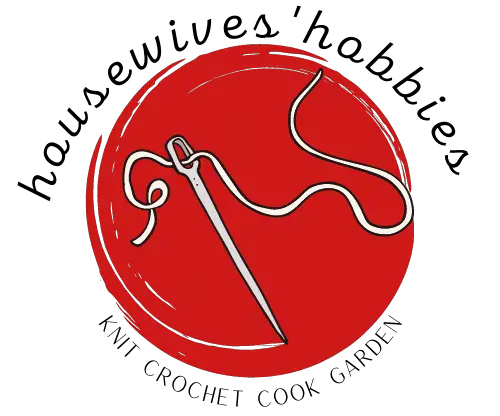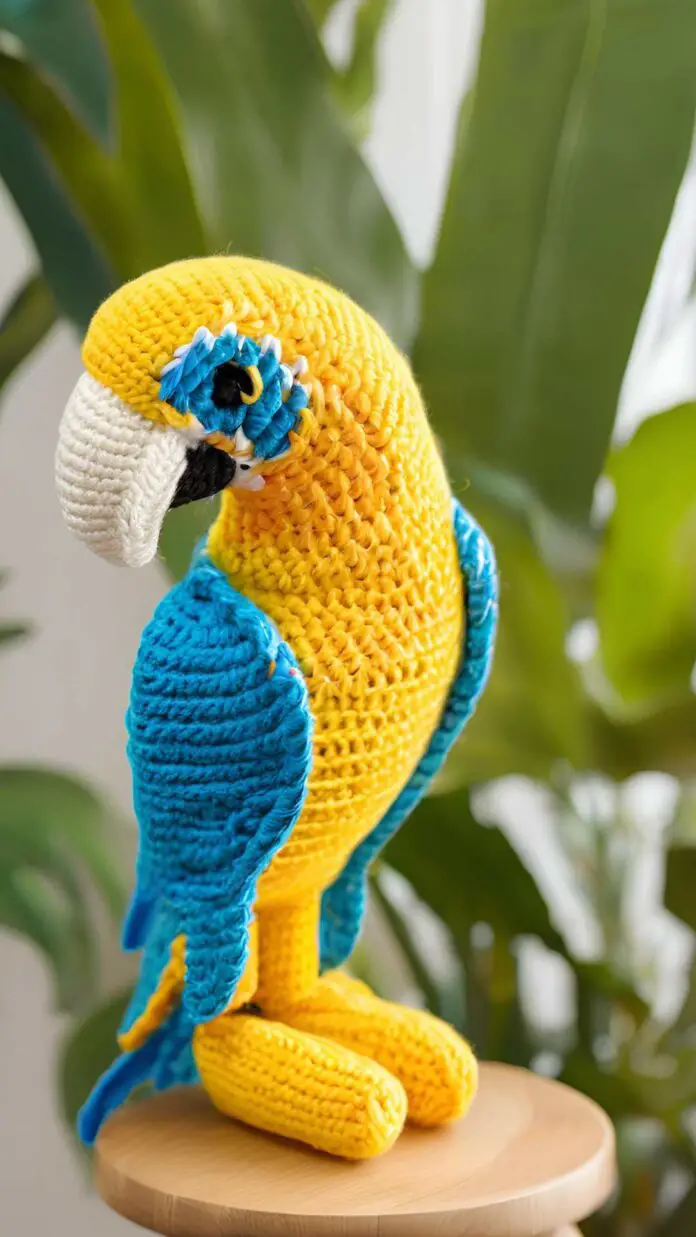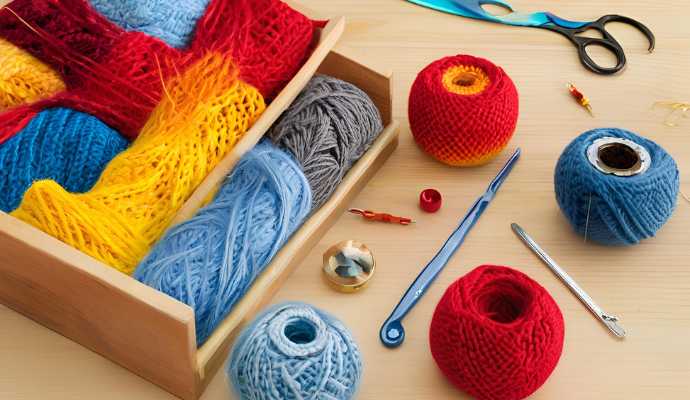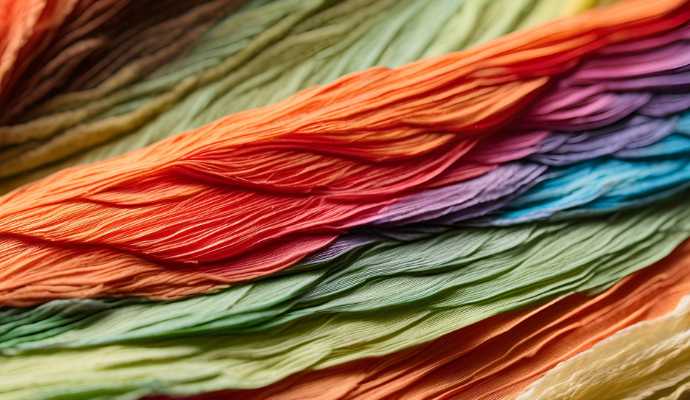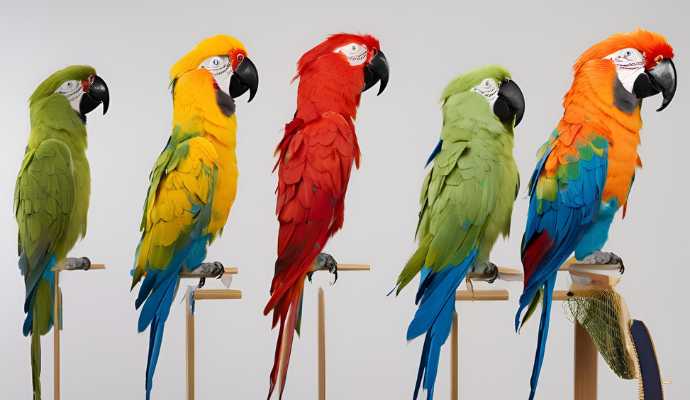A parrot crochet pattern offers a delightful way to enjoy crocheting while creating a colorful and artistic project. This article provides all the necessary information to help you choose the right parrot crochet pattern, including details about the required materials, instructions on how to read the pattern, and step-by-step guidance for crocheting the parrot itself. Additionally, you will find tips for customizing your design and resources for locating free patterns online and on social media platforms like Instagram.
Key Takeaways:
- Use quality materials such as cotton yarn and safety eyes when making a parrot crochet pattern for best results.
- Follow the pattern carefully, paying attention to symbols and instructions.
- Don’t be afraid to customize your parrot crochet pattern to make it unique.
What Is a Parrot Crochet Pattern?
A parrot crochet pattern is an instructional template that guides crocheters in creating delightful parrot toys, often inspired by real-life species such as the Macaw.
These patterns come in various sizes and complexities, offering options suitable for both beginner and advanced crocheters. Additionally, there are numerous color and design variations that can be crafted using yarn and crochet hooks.
Many parrot crochet patterns are designed in the amigurumi style, a Japanese art form that involves knitting or crocheting small stuffed animals. These charming creations are not only fun and cute but can also serve as educational tools for both children and adults. You can find many free PDF patterns and tutorials online to help with these projects.
What Materials Do You Need to Make a Parrot Crochet Pattern?
To create a parrot crochet pattern, you will need essential supplies and tools to complete the project, as well as some materials that can enhance the quality of the final piece.
The key materials for this project include yarn, crochet hook, and other tools:
- Round or lockable markers are ideal for marking the beginning of a round.
- Flexible markers can easily slide onto your yarn, adapting seamlessly to your work.
- Removable markers are especially useful for making adjustments or correcting mistakes.
- Yarn, which allows for the use of vibrant colors typical of macaws; Cotton yarn or Yarnart Jeans are popular choices;
- A crochet hook suitable for the type of yarn being used;
- Safety eyes, which add personality to the parrot;
- Polyester fiberfill, which will be used to make the final version of the parrot soft and cuddly, and craft wire for added structure;
- Scissors and other tools that will assist with crocheting techniques and finishing touches on the project.
1. Yarn
Selecting the right yarn for a parrot crochet pattern is crucial, as it directly affects the texture, appearance, and overall quality of the finished toy. If you are crocheting a macaw-themed parrot toy, cotton yarn or Yarnart Jeans is the preferred choice due to its durability and excellent color retention, which makes it suitable for more intricate designs and patterns.
The variety of colors available in these yarns allows crocheters to replicate the bright feathers of parrots, enhancing the visual appeal of the final product. Whether you’re crafting a Blue-and-yellow Macaw or a Scarlet Macaw, the right yarn colors can bring your creation to life.
Acrylic yarn is also a great option because of its resilience and affordability, making it ideal for larger projects or for beginners. Its soft texture ensures comfort for the little hands that will inevitably play with the completed design.
When deciding on colors for specific macaw patterns, crafters can benefit from using a color wheel to identify complementary shades. This approach can help guide crafters in effectively mixing vibrant reds, blues, and yellows to intricately mimic the stunning plumage of these birds. Drawing inspiration from cute bird photos on social media or craft communities can also provide creative ideas for your DIY projects.
Choosing the correct yarn not only enhances the aesthetic charm of the project but also ensures the longevity of these treasured creations. With the right materials, even beginners can make advanced-looking amigurumi toys.
2. Crochet Hook
The size of the crochet hook is crucial in any crochet pattern, including a parrot crochet design, as it influences the tightness of the stitches and the overall shape and appearance of the finished piece. When using Yarnart Jeans yarn, it is important to select a crochet hook size that is suitable for the yarn’s weight. If you purchase a pattern, make sure to check the recommended hook size.
If the crochet hooks are too small, the stitches will become overly tight, causing the yarn to lose its intended shape. Conversely, if the hooks are too large, the stitches will be too loose, making it difficult to define the intricate details that give the parrot its form and character.
The material of the crochet hook—whether wood, metal, or plastic—also has distinct advantages that can affect the final outcome of your work. Metal hooks tend to be smoother and allow for faster crocheting, but they offer less grip compared to wooden hooks. Lighter hooks, such as those made of aluminum, can make it easier to crochet larger pieces. Tapestry needles are also essential for weaving in ends and adding small details.
Ultimately, the choice of hook size and material comes down to personal preference. These factors can significantly impact how clearly the stitches are defined and how the piece drapes. Therefore, it is advisable to experiment with different sizes and materials to determine what works best for your chosen yarn and the goals of your final project. Using stitch markers can also help maintain the accuracy and shape of your crocheting project.
3. Scissors
A good pair of scissors is one of the essential tools needed for any crochet project, including parrot crochet patterns, as they are crucial for cutting yarn. It is important to select scissors that are suitable for your specific project, whether you are removing excess yarn at the end or cutting threads between color changes.
Using the right tools can make crafting activities easier, safer, and more enjoyable, particularly for beginners who need to be cautious when working with sharp edges. For DIY enthusiasts, investing in high-quality tools can make a significant difference in the crafting experience.
There are various types of scissors designed for crocheting, such as:
- Embroidery scissors
- Spring-loaded scissors, ideal for reducing hand fatigue during long crafting sessions;
- Thread snippers
Embroidery scissors feature sharp pointed tips that allow for precise cutting of yarn and thread, but they do require careful handling. Spring-loaded scissors operate with a squeeze of the hand, freeing your fingers and helping to prevent hand fatigue during extended use. Thread snippers are small scissors equipped with a spring mechanism that automatically opens the handle after cutting. Scissors are an essential part of the toolkit for any crocheting project.
To minimize the risk of injury, it is always best practice to cut away from your body and keep the blades closed when not in use. Additionally, scissors should be kept sharp and cleaned regularly to prevent corrosion. Good quality scissors can greatly assist crafters in navigating difficult patterns and enhance the overall crafting experience.
4. Stitch Markers
Stitch markers are invaluable tools for crocheters, particularly when working on intricate designs such as a parrot crochet pattern. They help indicate specific stitches or rounds, allowing crocheters to maintain an accurate count and shape of their projects. This accuracy is especially crucial in amigurumi, where precision is key to achieving the desired design and structure of your macaw.
With stitch markers, you can concentrate on your crocheting skills without the stress of losing your place. This is particularly beneficial when following more complex patterns or when learning new techniques.
There are various types of stitch markers, each designed to meet different needs and preferences, each offering unique benefits. Whether you are a beginner or an advanced crocheter, using stitch markers can significantly improve the accuracy and ease of your crochet projects.
- Round or lockable markers are ideal for marking the beginning of a round.
- Flexible markers can easily slide onto your yarn, adapting seamlessly to your work.
- Removable markers are especially useful for making adjustments or correcting mistakes.
By using these tools, you not only ensure accuracy but also promote organization in complex patterns, enhancing both the enjoyment and efficiency of your crocheting experience.
How to Read a Parrot Crochet Pattern?
Understanding a parrot crochet pattern is essential for transforming written instructions into a tangible creation. This involves comprehending both the symbols used and the step-by-step instructions provided.
Each pattern typically includes a legend or key that explains the symbols associated with stitches, rounds, and special techniques needed to create your adorable parrot toy. Familiarity with these symbols, along with careful adherence to the instructions, can greatly enhance your crocheting skills, whether you are a beginner or an experienced crocheter tackling a challenging amigurumi pattern. For example, the magic ring is a common symbol that is crucial for starting many amigurumi projects.
1. Understanding the Symbols
Understanding the symbols in a parrot crochet pattern is essential for grasping the instructions, which is crucial for successfully completing your project. Each symbol represents a specific stitch or action, such as a magic ring, chain stitch, or double crochet; therefore, familiarizing yourself with these symbols will enhance your crochet techniques. Online resources and craft community forums can be great places to learn more about these symbols and their applications.
Along with improving your skills, pattern symbols help you follow along with your parrot project, ensuring that each round and stitch is executed correctly and contributes to the overall design of your macaw creation. It is important to familiarize yourself with these symbols before starting your parrot crochet piece.
You may notice that most crochet patterns use similar symbols, while some symbols may denote specific techniques, color changes, or specialty stitches unique to the designer. Keeping a personal reference guide that includes the symbols, their meanings, and examples will be beneficial. Joining a community of fellow crocheters can also provide valuable insights and support as you develop your skills.
This reference will assist you in understanding the pattern and allow you to navigate your project smoothly as you continue to develop your crocheting skills.
2. Following the Instructions
Following the instructions in a parrot crochet pattern is essential for creating a final product that closely resembles the original design. Patterns are crafted with a specific method in mind, and altering them without a clear understanding of the potential impacts may result in a product that deviates significantly from the intended outcome. While using a tutorial that follows the same pattern can help clarify the process, the best way to learn is through hands-on experience. Crafting an adorable parrot, like Poco the Parrot, requires attention to detail and patience, but the process can be incredibly rewarding.
To enhance your crochet journey, take detailed notes and create a checklist based on the pattern instructions to track the steps you have completed. This practice will help you stay organized and provide a clear reference if you need to pause and return later. Whether you’re a beginner or advanced crafter, using tools like a crochet hook and tapestry needles can be very beneficial.
Additionally, seek out visual tutorials that demonstrate the various stitches and techniques you find challenging; these resources can assist you in navigating the more difficult sections of the crochet pattern. Watching these tutorials on platforms like Instagram can be quite educational and fun.
Remember, patience and persistence are key; each crochet pattern offers a unique opportunity to practice and refine your skills. Embrace any mistakes as valuable learning experiences that contribute to your growth as a crocheter. Trying out different crochet patterns, such as amigurumi, can also enhance your crafting repertoire.
How to Make a Parrot Crochet Pattern?
Here are the steps to create a parrot crochet pattern:
- Choose Your Yarn: Select your yarn and hook size. The number of colors can vary depending on the type of parrot you wish to create. Opt for a yarn with a soft texture to ensure a snugly toy. Consider using Yarnart Jeans or Cotton yarn for your project.
- Start with the Body: In most parrot crochet patterns, you begin by creating the body and head of the parrot using an amigurumi shape. This will form the hollow structure that you can stuff with polyester fiberfill to give it volume and shape.
- Make the Wings: Most crochet parrot patterns shape the wings using either half double crochet or double crochet stitches. These stitches result in an airy, layered appearance that mimics the look of bird wings in flight.
- Add Intricate Details: The most important part of crochet parrot patterns lies in how you add details such as the eyes, beak, and feathers. Consider using safety eyes for a secure and polished look. These elements give the parrot its unique shape and personality.
- Test Your Pattern: As with all crochet patterns, it’s essential to test your parrot design. This typically involves several crocheters, including the original designer, making the pattern with different yarns and hook sizes to ensure the final product aligns with the original design.
1. Start with the Body
The first step in creating a parrot crochet pattern is to make the body, which serves as the foundation for the entire design. In this phase, you will use the magic ring to create a tight center and then work in rounds to shape the body. By carefully following the pattern instructions, you can ensure that the proportions and structure are accurate, allowing you to add the wings and other features later.
To achieve the ideal overall shape of the parrot’s body, it is essential to maintain even tension in every stitch to ensure a professional-looking finish. Pay close attention to the increases and decreases in the rounds, as these adjustments are crucial for creating a rounded body that resembles a parrot. Using stitch markers can help you keep track of your rounds and ensure that your product is symmetrical and even.
Incorporating various stitch types, such as single crochet and half double crochet, can add texture to your design while accentuating different features of the parrot’s body. Lastly, measuring and making adjustments as needed will help guarantee a delightful finished product that closely resembles these cheerful birds. Consider referencing a PDF pattern for more detailed guidance on this step.
2. Make the Wings
Next, the wings are created, as they are a significant aspect of the parrot’s shape and personality. The design for the wings will complement the parrot’s body. Typically, the wing pattern utilizes the same stitch technique and yarn weight as the body, ensuring that both pieces match in size and drape.
Depending on the desired look, the wing pattern can be designed with or without feathers. The wings are the perfect section of the crochet parrot to incorporate bright colors, as they can emulate the rich tones seen in real parrots such as the Blue-and-yellow Macaw or the Scarlet Macaw.
When making the wings, consider the design elements you plan to include, as these will greatly influence the final appearance of the parrot. Incorporating increasing and decreasing stitches can help achieve a folded shape, resulting in a more realistic look.
Experimenting with color gradients or stark contrasts can replicate the beautiful tones of actual birds. Using yarn with some stretch will be beneficial for maintaining the correct size while allowing flexibility for adding details.
3. Create the Head and Beak
Creating the head and beak of the parrot crochet pattern is a delicate yet rewarding part of the crafting process, as these features contribute significantly to the character of your toy. Begin by carefully following all the pattern instructions and pay close attention to the shaping techniques that will help define the unique aspects of the parrot’s face.
Utilizing contrasting colors for the beak can enhance your creation’s visual appeal, making it even more adorable. To achieve the perfect head shape, consider using short rows along with strategic increases or decreases to create the desired contours that make the parrot instantly recognizable. A crochet hook suitable for your yarn weight will aid in achieving precision.
Accuracy in these shaping techniques is essential, as they greatly influence the final appearance. Color selection offers an opportunity for creativity; choosing bright colors for the beak and accents can bring the character to life and invite admiration from everyone who sees it.
Experimenting with different shades not only highlights the distinctive features but also adds a playful touch to the project, showcasing the artistic possibilities of crochet. For a more detailed guide, consider using a PDF pattern.
4. Add Eyes and Details
The final stage of the parrot crochet pattern involves attaching the eyes and adding other finishing touches that enhance the piece’s uniqueness.
Safety eyes are commonly used for crocheted toys because they not only contribute aesthetically but also ensure safety for younger children. The placement and size of the eyes are crucial, as they impart personality to the parrot and complete the overall design. Using craft wire can help in positioning the eyes precisely.
Selecting the right eyes can significantly alter the piece’s character, so it’s beneficial to explore various options, such as embroidered features or felt pieces. Consider the expression you wish to convey; larger eyes may create a cuter look, while smaller ones might lend a more elegant appearance.
Experimenting with eye placement can also be enjoyable, as even a slight adjustment can result in a completely different expression. Additional details, like blush spots or tiny beaks, will further enhance the final product.
Where Can You Find Free Parrot Crochet Patterns?
Finding free parrot crochet patterns is easy due to the vast resources available online and within crochet communities. Countless websites, blogs, and social media platforms offer free or low-cost patterns and tutorials for crocheting parrots and various other projects, catering to every skill level from beginners to experienced crafters.
Popular platforms such as Etsy, Instagram, and Ravelry feature user-generated content and creative ideas, enabling enthusiasts to discover patterns and connect with like-minded individuals who share a passion for crocheting adorable animals, including macaws. You can also explore Ribblr for more patterns and ideas.
1. Online Crochet Communities
Online crochet communities offer an excellent opportunity to discover free parrot crochet patterns, as users actively share their own creations, patterns, and helpful tips.
Platforms like Ravelry and various Facebook groups are rich in these resources, cultivating a supportive environment for both novices and experienced crocheters to exchange ideas and showcase their projects. By engaging with other crafters, you gain access to a diverse array of patterns, as well as a sense of community and inspiration for your crafting endeavors.
These online groups encourage collaboration, with users sharing their designs and assisting one another in improving their skills. When one member imparts their knowledge, the entire community benefits and grows together.
Many of these communities also host challenges, swaps, and tutorials that foster interaction among users and enhance creative output. Being part of such a community can lead to lasting friendships and mentorships that enrich your crochet journey. For example, you might try making Poco the Parrot as part of a community challenge.
2. Crochet Blogs and Websites
Crochet blogs and dedicated websites are among the best sources for finding free parrot crochet patterns. They offer detailed tutorials and tips, along with a wide variety of designs to choose from.
Many bloggers are passionate crocheters themselves and share their experiences, making it easier for others to learn and find inspiration. These online platforms often include search functions that enable users to easily navigate through thousands of patterns, ensuring they find the perfect parrot design for their next project.
Along with providing free patterns, many of these resources cultivate vibrant communities where crocheters can connect, share their creations, and seek advice. For your next project, consider using materials like polyester fiberfill and crochet hooks.
For instance, websites like Ravelry host an extensive collection of patterns and allow users to interact in forums, providing opportunities to discuss techniques and collaborate on projects.
Similarly, popular blogs like ‘The Spruce Crafts’ and ‘Repeat Crafter Me’ often feature unique designs and tutorials, making them invaluable resources for both beginners and experienced crafters.
Exploring these platforms allows users to discover a wealth of creativity and support while honing their crochet skills.
3. Social Media Platforms
Social media platforms like Instagram and Pinterest serve as hubs for crocheters, offering valuable resources for discovering free parrot crochet patterns and other creative ideas. These platforms can be particularly useful for finding DIY projects and craft ideas.
Users can follow fellow crocheters on social media platforms like Instagram, browse amigurumi and DIY-related hashtags, and explore posts featuring images of completed projects. Beyond providing patterns, these platforms foster a sense of community by connecting crocheters from around the globe to exchange creative ideas and fun projects.
Influencers within the crochet community share new techniques, educational tutorials, and instructional videos, helping both beginners and experienced crocheters enhance their skills. These videos often cover various crochet techniques, such as creating a magic ring or how to work in rounds, offering viewers hands-on learning experiences.
By following trending hashtags such as #CrochetCommunity and #AmigurumiAdventures, users can uncover captivating new projects such as the Macaw Parrot and connect with other crafters to exchange ideas and encouragement.
This vibrant exchange fosters a strong sense of community and motivates individuals throughout their crafting journeys. Engaging with others who share the same passion will undoubtedly enrich your crochet experience and inspire countless creations.
Tips for Making a Parrot Crochet Pattern
To create a successful parrot crochet pattern, such as the Blue-and-yellow Macaw or Poco the Parrot, consider the following tips:
- Use high-quality materials like Yarnart Jeans or cotton yarn
- Practice frequently to perfect your crocheting techniques
- Customize the design with different colors and sizes
- Adhere to the pattern guidelines
Opting for cotton yarn and safety eyes will ensure that your parrot pattern is both durable and safe. Adding fiberfill will help to shape the parrot. While it is essential to follow the pattern closely to achieve the desired results, feel free to add a personal touch through your choice of colors and designs. You can also purchase patterns in PDF format from sites like Etsy, Ribblr, and Ravelry.
Regular practice with various techniques and more challenging designs will help you enhance your crochet skills.
1. Use Quality Materials
Using high-quality materials like Yarnart Jeans is essential for achieving optimal results when creating a parrot crochet pattern, as these materials significantly influence both the aesthetic and physical properties of the finished project.
Higher-quality supplies not only enhance the visual appeal of the final item but also improve its durability and longevity. For instance, a premium blend of cotton or acrylic yarn provides the necessary softness and strength, making it ideal for crafting vibrant and lifelike creations. Additionally, using tools such as ergonomic crochet hooks and tapestry needles can make the crafting process more comfortable.
Additionally, using well-made tools, such as ergonomic crochet hooks and tapestry needles, can enhance comfort and reduce fatigue during extended crafting sessions. Moreover, higher-quality components, such as securely stitched safety eyes, add an important layer of safety when making toys for children. For a more stable structure, consider using craft wire for specific parts of the parrot.
Prioritizing quality over cost will always yield better results and a greater sense of satisfaction throughout the crafting process.
2. Follow the Pattern Carefully
Following the pattern precisely is essential when crocheting a parrot, as even minor mistakes can alter the finished project. Each step in a crochet pattern is designed to guide you through the process, and taking extra care to ensure accuracy will ultimately lead to the best results.
It is important to pay attention to stitch counts and techniques mentioned in the pattern, following them closely to maintain uniformity throughout your work. Crocheting this colorful project requires a great deal of patience and diligence from the crocheter.
The detailed nature of crochet means that every stitch and row must be evaluated carefully, as a small error can result in an unbalanced shape or missing details that detract from the overall appeal of the finished parrot.
By carefully examining each step before executing it, crafters can ensure their work aligns with the written instructions, creating a process that is rewarding, teaches a valuable skill, and provides increased satisfaction.
Emphasizing proper techniques for crocheting a parrot will enhance the outcome of any crochet project.
3. Don’t Be Afraid to Customize
Feel free to customize your parrot crochet pattern to unleash your creativity. By changing colors, adjusting the size, or adding unique features, you can create a one-of-a-kind parrot toy that reflects your individuality. You can also shop for various yarns and tools online to find materials that suit your design ideas best.
This flexibility not only enhances your enjoyment of the project but also contributes to the diversity within the crochet community, inspiring others to explore their own creative ideas. Don’t forget to share your creations on social media to motivate other crafters!
For instance, you might opt for bright, unconventional color patterns that make your parrot stand out or add whimsical accessories such as a tiny hat, sunglasses, or even incorporating elements of other animals for a unique twist.
Additionally, experimenting with different stitches can impart unique textures to your work, making it even more interesting. Trying out advanced techniques can introduce new artistic elements to your crochet projects.
Ultimately, customization is a matter of personal preference, and every stitch carries significance—your significance. Both experienced and novice crocheters should embrace the opportunity to customize, as it allows them to express themselves and encourages others to step outside their comfort zones.
4. Practice Makes Perfect
Practice is crucial for mastering crochet techniques, especially those involved in creating complex parrot patterns. Achieving proficiency in the finer points of crochet takes time and repetition. Whether you are making a Scarlet Macaw or a Blue-and-yellow Macaw, each project helps refine your skills.
As you continue to crochet, you will become more comfortable with your materials and tools, allowing you to approach more intricate designs with confidence.
Treat each project as a valuable learning experience; this mindset will help you develop your skills more rapidly. Each new parrot creation will symbolize a new level of expertise in your crochet journey. Watching video tutorials and reading detailed instructions can also provide additional guidance and inspiration.
Frequently Asked Questions
Can I find a free parrot crochet pattern online?
Yes, there are many websites and blogs that offer free parrot crochet patterns for download. You can find some great options on platforms like Etsy, Ribblr, and Ravelry.
Are there different types of parrot crochet patterns available for free?
Yes, you can find patterns for different types of parrots such as macaws, cockatoos, and parakeets. These patterns are available in various sizes and designs to suit your preferences.
Do I need to be an experienced crocheter to make a parrot crochet pattern?
While some patterns may be more complex, there are also beginner-friendly parrot crochet patterns available for free. These simpler patterns ensure that even those new to crocheting can create cute and colorful parrot toys.
Can I customize the colors of my parrot crochet pattern?
Yes, you can choose your own color scheme and yarn to create a unique parrot crochet pattern. Experimenting with different colors and yarn types can result in truly unique and creative parrot designs.
Are there any special techniques or stitches required for a parrot crochet pattern?
Some patterns may incorporate more advanced stitches or techniques, such as using a magic ring or working in rounds, but there are also simpler patterns available for beginners.
Are there any safety precautions I should keep in mind when making a parrot crochet pattern?
It is important to use child-safe materials and avoid small parts that could be choking hazards if the parrot crochet pattern is intended for a child. Polyester fiberfill is a good option for stuffing, and always ensure safety eyes are securely attached.

